Millimeter-wave (mmWave) filter technology is a crucial component in enabling mainstream 5G wireless communication, yet it faces numerous challenges in terms of physical dimensions, manufacturing tolerances, and temperature stability.
In the realm of mainstream 5G wireless communication, the future focus will shift towards utilizing frequencies above 20 GHz within the mmWave spectrum to enhance bandwidth capacity, ultimately boosting transmission rates.
It is well-known that due to their high frequencies and significant path loss, mmWave signals necessitate smaller antennas. These antennas are grouped together to form narrow-beam, high-gain array antennas.
One of the primary difficulties in filter design lies in adapting to the antenna's dimensions, especially for high-frequency filters. Additionally, the manufacturing tolerances and temperature stability of filters significantly impact every aspect of product design and production.
Size Constraints in mmWave Technology
In traditional antenna array systems, the spacing between elements must be less than half the wavelength (λ/2) to avoid interference. This principle equally applies to 5G beamforming antennas. For instance, an antenna operating in the 28 GHz band has an element spacing of approximately 5 mm.Consequently, components within the array must be extremely small.
Phased arrays employed in mmWave applications often adopt a planar structure design, as illustrated below, where antennas (yellow areas) are mounted on printed circuit boards (PCBs) (green areas), and circuit boards (blue areas) can be connected perpendicularly to the antenna board.
The space on these circuit boards is already minimal, but emerging technologies are exploring even more compact flat structures, implying that filters and other circuit blocks need to be significantly smaller to be mounted directly on the back of the antenna PCB.
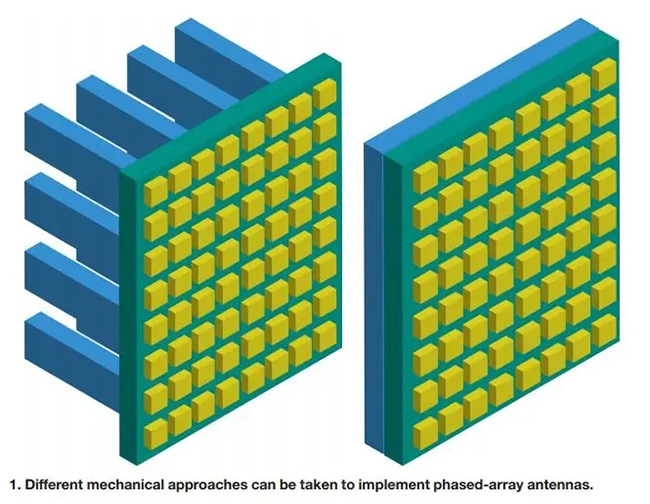
Impact of Manufacturing Tolerances on Filters
Given the significance of mmWave filters, manufacturing tolerances play a pivotal role, influencing both filter performance and cost.
To further investigate these factors, we compared three distinct 26 GHz filter manufacturing methods:
The following table outlines typical extreme tolerances encountered in production:

Tolerance Impact on PCB Microstrip Filters
As depicted below, a microstrip filter design is showcased.
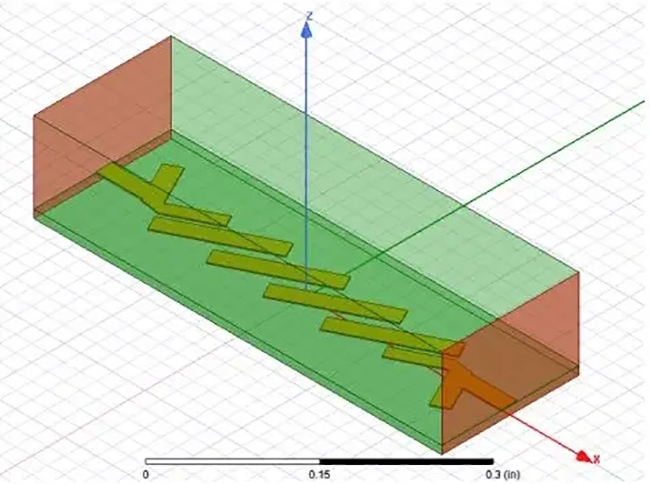
The design simulation curve is as follows:
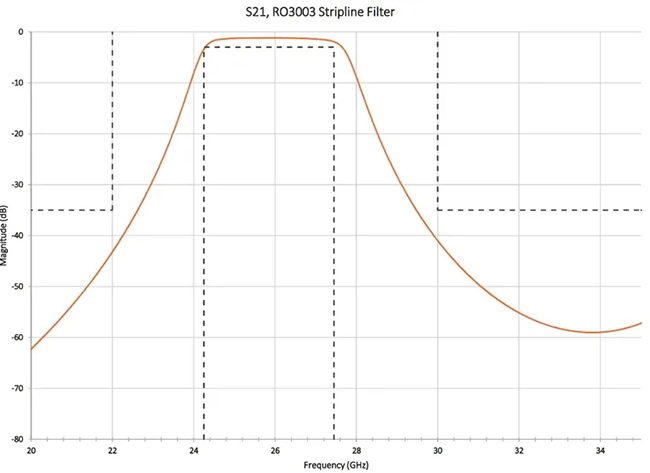
To study the tolerance's effect on this PCB microstrip filter, eight potential extreme tolerances were selected, revealing notable differences.
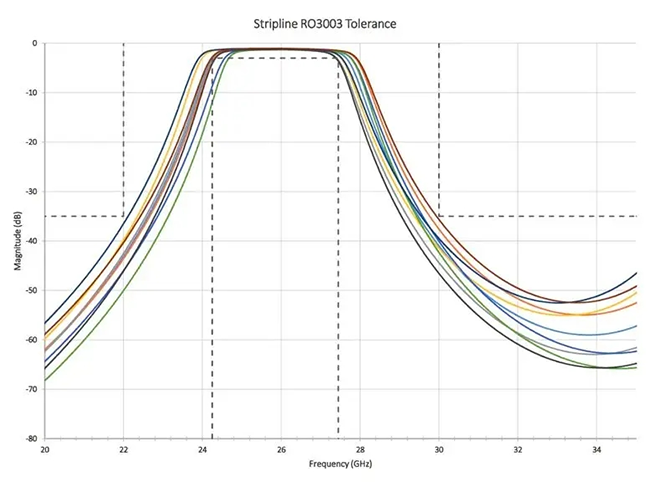
Tolerance Impact on PCB Stripline Filters
The stripline filter design, shown below, is a seven-stage structure with 30 mil RO3003 dielectric boards at the top and bottom.
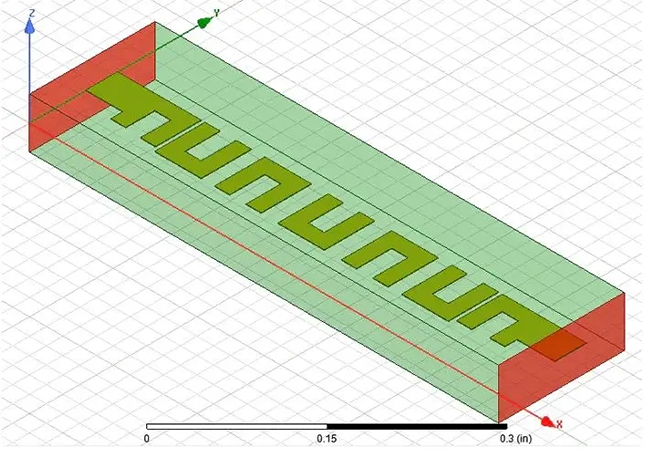
The roll-off is less steep, and the rectangular coefficient is inferior to that of the microstrip due to the absence of zeros near the passband, resulting in suboptimal harmonic performance at distant frequencies.
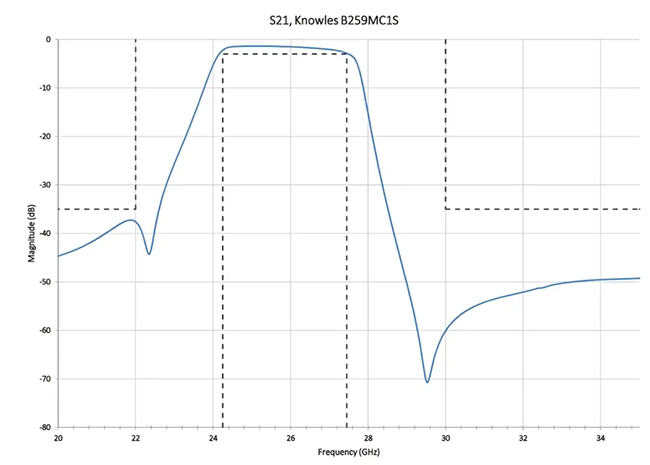
Similarly, a tolerance analysis indicates better sensitivity compared to microstrip lines.
Conclusion
For 5G wireless communication to achieve faster speeds, mmWave filter technology operating at 20 GHz or higher frequencies is imperative. However, challenges persist in terms of physical dimensions, tolerance stability, and manufacturing complexities.
Thus, the impact of tolerances on designs must be carefully considered. It is evident that SMT filters exhibit greater stability than microstrip and stripline filters, suggesting that SMT surface-mount filters may emerge as the mainstream choice for future mmWave communications.
Concept, renowned for its expertise in RF filter manufacturing, offers a comprehensive selection of filters tailored to meet the unique requirements of 5G solutions. As a professional Original Design Manufacturer (ODM) and Original Equipment Manufacturer (OEM), Concept provides an extensive RF filter list for reference, ensuring compatibility and optimal performance for diverse 5G applications. To explore the available options, please visit their website at www.concept-mw.com . For further inquiries or to discuss specific project needs, feel free to contact the sales team at sales@concept-mw.com.
Post time: Jul-17-2024
